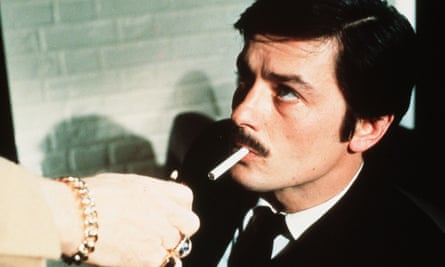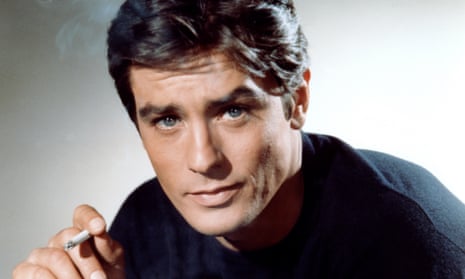The French Socialist senator Nadine Grelet-Certenais has fired up a heated debate in France over the depiction of smoking in the movies. She wants it stubbed out, for good, on the basis that Gallic heroes puffing away on the silver screen makes the filthy habit seem cool and provides the evil tobacco industry with free advertising. Ban it, and everything will be made miraculously better – c’est simple. Her call has been taken up by the health minister, Agnès Buzyn, and suddenly film-makers have a fight on their hands.
The problem with this is that it totally ignores the venerable history of French cinema, which plays out as a long, drawn-out visual love letter to the act of smoking. Smoking a cigarette and cinema have always gone perfectly together – they are both ways of killing time, after all – but the moving image also captures the act of smoking so much better than other art forms, such as still photography. The flare of a match or lighter, and then the upward curl of smoke are forever seductive. All the best French film directors knew this and have exploited it endlessly.
Think of virtually any famous French film and cigarettes are an essential ingredient. Jean-Luc Godard’s À Bout de Souffle (Breathless) opens with Jean-Paul Belmondo driving and smoking, a fag dangling from his lower lip, and for the next 90 minutes he chainsmokes his way through the entire story until, shot in the back, he runs away, still puffing, to collapse and die on the street. Virtually his last act on falling to the pavement is to exhale a cloud of smoke, as if the very life is escaping out of him.
For years, critics have thought the title refers to the love affair between Belmondo and Jean Seberg, or possibly the spirit of the new wave and the film’s construction, but actually it was all about the fags. Belmondo was literally à bout de souffle from industrial amounts of nicotine. Indeed, take the smoking away and what is left? French philosophers are still wrestling with this question in cafes across the country.

Belmondo’s main iconic rival was Alain Delon, another alpha male who moodily puffed his way through hundreds of titles. One of the most stylish openings to any film is Jean-Pierre Melville’s Le Samouraï, which sees Delon lying on his bed smoking, a thick cumulus hovering above his prone body while a canary cheeps (or coughs) away in the corner. Melville lets the shot run for a full two minutes and the only movement in the entire scene is the undulation of the smoke and Delon’s hand lifting the cigarette to his lips.
What all the great directors understood was that smoking on screen not only looks cool but also foreshadows mortality and therefore serves to define character. The antiheroes Belmondo and Delon portrayed are always fated to die, just as each cigarette they devour is fated to be stubbed out or tossed in to the Seine. Miraculous, then, considering their prodigious on-screen consumption of Gauloises and Gitanes, that both of these actors are still alive and now into their 80s, managing to outlive any of their onscreen alter egos and thereby questioning the politicians’ logic that banning smoking in the movies will help the nation’s health. If Belmondo and Delon still draw breath, then can smoking really be that bad for you?
In any case, the movies may be the wrong target. As cinema continues its long decline, cigarettes have been revived and rediscovered on television. Popular American serials are currently thick with the fog of smoking, not least in 70s-set shows such as David Simon’s The Deuce and David Fincher’s Mindhunters. The Deuce even has twin James Francos, so that he can inhale and light up twice as often. The reality is that smoking and the moving image are inextricably linked, no matter where the stories are set. As long as there are tales to be told, film-makers will always employ the prop of a lit cigarette.
